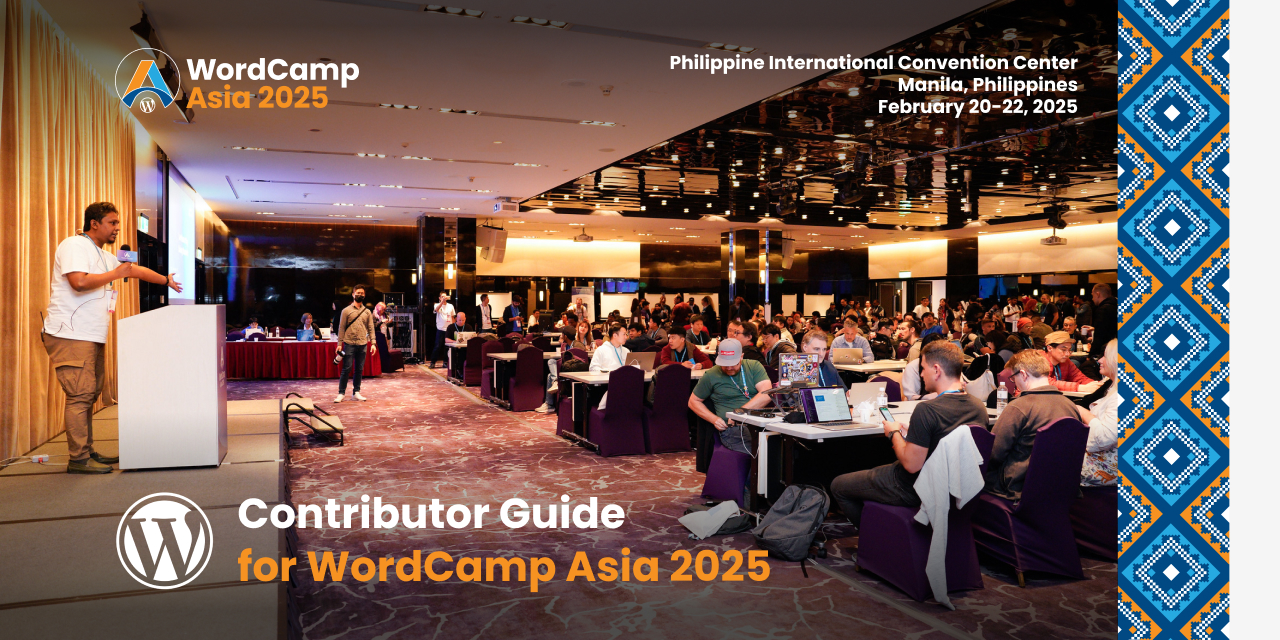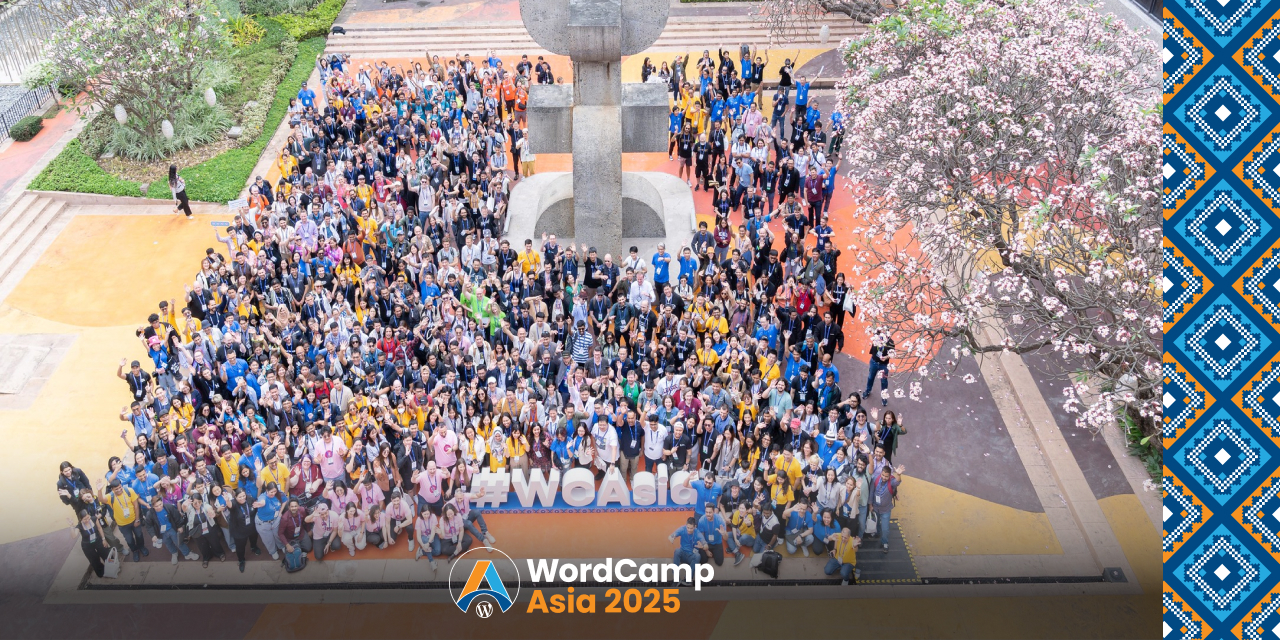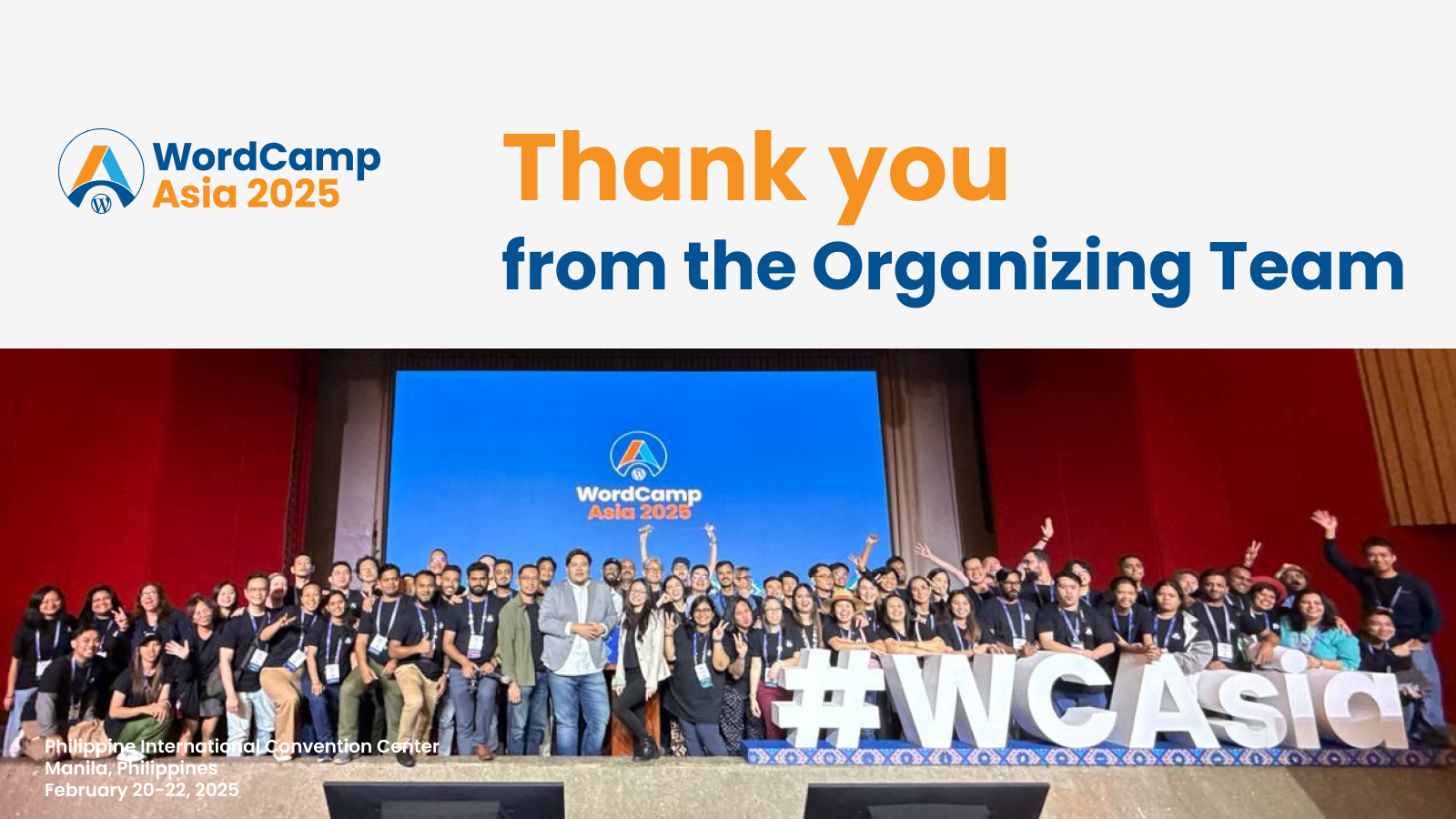WordCamp Asia 2025’s Contributor Day is the perfect opportunity to give back to WordPress while learning new skills and connecting with the global community. Whether you’re a developer, designer, marketer, or writer, this guide will help you get started with contributing to WordPress and making a meaningful impact. In this post, we will explore how you can get involved! First, let’s know some basic things about WordPress and WordPress contribution.
What is WordPress’s open-source platform?
WordPress is a powerful open-source platform that powers over 40% of the web. Built with PHP and MySQL, it offers flexibility, scalability, and a vast plugin ecosystem. Maintained by a global community, WordPress enables users to create websites, blogs, and applications while promoting collaboration, transparency, and continuous innovation.
Why does contributing to WordPress matter for the community and personal growth?
Contributing to WordPress is essential for both community development and personal growth. It helps improve the platform, ensuring it remains innovative, secure, and accessible for millions worldwide. At the same time, contributors gain valuable experience, expand their networks, and enhance their skills.
Why It Matters:
- Strengthens the Community – Contributions help WordPress grow and evolve.
- Enhances Skills – Developers, designers, writers, and marketers can improve their expertise.
- Builds Connections – Engage with like-minded professionals globally.
- Boosts Career Opportunities – Open-source contributions showcase expertise to potential employers.
- Gives Back – Helps support the ecosystem that powers a huge web portion.
Ways to Contribute to WordPress
WordPress thrives because of its vibrant community of contributors. Whether you’re a developer, designer, writer, marketer, or just passionate about open source, there’s a way for you to contribute. Here’s how:
1. Code (Core Development & Plugins)
- Improve WordPress core by fixing bugs, adding features, and optimizing performance.
- Develop plugins and themes to extend WordPress functionality.
- Contribute to Gutenberg, the block editor powering modern WordPress sites.
- Review and test new releases to ensure stability and security.
2. Documentation
- Write and update documentation for WordPress users and developers.
- Improve the official WordPress Codex and Developer Handbook.
- Create tutorials, guides, and FAQs for newcomers.
- Ensure translated documentation is accurate and up to date.
3. Design
- Enhance WordPress’s user experience (UX) and user interface (UI).
- Design themes, icons, and visual assets for WordPress.org.
- Improve accessibility to make WordPress usable for everyone.
- Collaborate on Figma and other design tools to refine WordPress interfaces.
4. Support
- Help users troubleshoot issues in the WordPress support forums.
- Answer questions and guide Slack and community groups.
- Contribute to WordPress.org support documentation and FAQs.
- Test and report bugs to improve WordPress stability.
5. Marketing
- Promote WordPress through social media, blogs, and case studies.
- Help organize and promote WordPress events, including WordCamps.
- Create outreach campaigns to attract new users and contributors.
- Write success stories showcasing how businesses use WordPress effectively.
6. And More!
- Community & Events: Organize and volunteer at WordCamps and meetups.
- Translations: Translate WordPress, plugins, and themes into different languages.
- Accessibility: Ensure WordPress is usable by people of all abilities.
- Testing & QA: Test new features, find bugs, and suggest improvements.
No matter your skill set, there’s a place for you in the WordPress community!
How to get started with the contribution?
Getting started with WordPress contribution may seem overwhelming, but it’s easier than you think! In this guide, we’ll walk you through the first steps, from joining the community to making your first meaningful contribution. Let’s begin!
Getting Started with Contribution
- Create a WordPress.org account (for tracking contributions: https://login.wordpress.org/register)
- Create GitHub account
- Join the official WordPress Slack workspace (channels to follow: #wcasia)
- Setting up a local WordPress development environment (https://github.com/WordPress/wordpress-develop?tab=readme-ov-file#wordpress)
- Familiarizing with the official WordPress contribution handbook(https://make.wordpress.org/core/handbook/)
- Identifying your skills and interests (e.g., code, design, support)
Finding Opportunities to Contribute
Getting involved with WordPress starts with finding the right opportunity that matches your skills and interests. Here’s how you can begin:
Explore the “Good First Bugs” Label
If you’re new to contributing, the “Good First Bugs” label is a great place to start. These issues are beginner-friendly and help you get familiar with WordPress development and contribution processes.
- Visit the WordPress Core Trac or GitHub repositories to find these labeled tasks.
- Choose an issue, read the details, and check if you can help fix it.
- Engage with the community for guidance and feedback.
Find “Good First Bugs” here:
- WordPress Trac: Good First Bugs
- GitHub: WordPress Projects
Engage with Existing Projects and Teams
WordPress has multiple teams working on different aspects of the platform. You can join a team that aligns with your skills and interests. Some key teams include:
- Core Team – Develop and maintain WordPress core.
- Meta Team – Work on WordPress.org infrastructure and tools.
- Polyglots Team – Translate WordPress into different languages.
- Marketing Team – Promote WordPress and create outreach content.
To get started, join discussions on WordPress Slack and attend team meetings. Check the Make WordPress site for more details on each team.
You can also check out the Core Test Team at WCAsia 2025: Contributor Day
Use Trac and GitHub to Discover Open Issues
WordPress development and contributions are managed through two key platforms:
- Trac – The bug tracking system for WordPress core. It’s used to report issues, request features, and track updates.
- GitHub – Used for specific projects, including Gutenberg (block editor) and other development repositories.
How to use them effectively:
- Search for open issues related to your area of interest.
- Read previous discussions and understand the context.
- Comment on issues to express interest in contributing.
- Follow WordPress coding standards and contribution guidelines when submitting fixes.
By exploring beginner-friendly issues, engaging with teams, and using Trac/GitHub effectively, you’ll quickly find meaningful ways to contribute to WordPress!
How to Submit Patches, Pull Requests, and Report Bugs
Contributing to WordPress often involves submitting bug fixes, feature enhancements, or documentation improvements. Here’s how to do it properly:
Submitting Patches on Trac:
- Find a bug or enhancement in WordPress Trac.
- Read the related discussions and check if someone is already working on it.
- Write and test your fix in a local WordPress development environment.
- Create a patch file (.diff or .patch) using SVN or Git.
- Upload the patch to Trac, explain the fix, and request a review.
Submitting Pull Requests on GitHub (for Gutenberg and other projects):
- Fork the repository on GitHub.
- Create a new branch for your fix or feature.
- Write and test your code following WordPress coding standards.
- Submit a pull request (PR) with a clear explanation of what you’ve done.
- Respond to feedback from maintainers and update your PR if needed.
Reporting Bugs:
- Check if the issue already exists in Trac or GitHub.
- Provide detailed information, including WordPress version, browser, and error messages.
- Add steps to reproduce the bug and screenshots if possible.
Reviewing Other Contributors’ Work Constructively
Code review and feedback are essential in open-source collaboration. Here’s how to review others’ contributions helpfully:
- Be Respectful and Encouraging – Appreciate the effort and offer positive reinforcement.
- Check for Best Practices – Ensure code follows WordPress coding standards, security guidelines, and best practices.
- Test the Contribution – If possible, test the patch or PR locally to confirm it works as expected.
- Provide Specific Feedback – Instead of just saying “This doesn’t work,” explain why and suggest improvements.
- Ask for Clarifications When Needed – If something is unclear, politely ask the contributor to explain their approach.
By communicating effectively, submitting contributions properly, and reviewing work constructively, you’ll become a valuable part of the WordPress community and help improve the platform for everyone!
Best Practices for Contributing to WordPress
When contributing to WordPress, following best practices not only ensures a high-quality contribution but also fosters a collaborative, supportive community. Here are some key guidelines:
Follow WordPress Coding Standards and Guidelines
- Consistency & Quality: Adhere to the established coding standards to maintain a consistent codebase.
- Security & Maintainability: Ensure that your code is secure, efficient, and easy for others to read and update.
- Reference Documentation: Always consult the WordPress Developer Handbook for the latest standards and best practices.
Provide Clear Documentation for Any Submitted Code or Design Work
- Comprehensive Explanations: Include clear, concise documentation that explains what your contribution does, how it works, and why it’s needed.
- Inline Comments & Commit Messages: Use meaningful inline comments in your code and detailed commit messages to help reviewers understand your changes.
- User Guides: If your work impacts the user experience, update or create guides and tutorials for end-users.
Focus on Quality Over Quantity When Contributing
- Thorough Testing: Prioritize creating well-tested, bug-free contributions over a large volume of less refined work.
- Review & Revise: Take the time to review and refine your contributions before submission.
- Long-Term Impact: Aim for solutions that have a lasting positive impact on the WordPress ecosystem.
Be Respectful, Inclusive, and Open to Feedback
- Positive Communication: Engage with fellow contributors respectfully and constructively.
- Embrace Diversity: Encourage an inclusive environment where everyone feels welcome to contribute, regardless of their background or skill level.
- Open to Criticism: View feedback as an opportunity to improve and learn; be willing to revise your work based on suggestions from peers.
By adhering to these best practices, you not only enhance the quality of your contributions but also contribute to a thriving, supportive WordPress community.
Maintaining Momentum and Staying Involved in WordPress
Staying active in the WordPress community is a rewarding long-term journey. Here’s how you can balance contributions with your daily commitments and continue growing:
Balancing Contributions with Daily Work or Personal Projects
- Prioritize Wisely: Identify contributions that align with your skills and interests to make the best use of your limited time.
- Set Realistic Goals: Establish achievable milestones—whether it’s a small bug fix or updating documentation—to prevent overwhelm.
- Schedule Dedicated Time: Allocate specific time slots for contributing, even if it’s just an hour each week.
- Integrate Efforts: Where possible, merge your personal projects or professional work with community contributions to maximize efficiency.
Staying Updated with WordPress Releases, Updates, and News
- Follow Official Channels: Subscribe to the WordPress newsletter, follow the WordPress blog, and engage on social media platforms.
- Engage in Community Forums: Join WordPress Slack channels, and forums, and attend WordCamps to catch the latest developments.
- Utilize Tools: Set up RSS feeds and GitHub notifications to receive timely updates on issues, pull requests, and releases.
- Routine Check-Ins: Regularly review release notes and news to stay informed about changes that might affect your contributions.
Continuing to Learn, Grow, and Evolve with the WordPress Community
- Embrace Lifelong Learning: Take advantage of workshops, online tutorials, and community-led courses to enhance your skills.
- Seek and Provide Mentorship: Engage in mentorship—whether you’re learning from a seasoned contributor or guiding someone new—to deepen your understanding.
- Attend Events: Participate in local meetups, WordCamps, or virtual events to network and gain fresh insights.
- Experiment with New Areas: Explore different facets of WordPress (code, design, support, etc.) to diversify your expertise and discover new passions.
- Reflect and Adapt: Regularly assess your progress and adjust your goals to stay motivated and aligned with community needs.
By integrating these practices into your routine, you can maintain a sustainable momentum while continually evolving alongside the vibrant WordPress community.
A reminder for the contributor day
Bring an adopter like the given image, or you might get one from here in Manila too.
In the Philippines, power plugs and sockets (outlets) of types A, B, and C are used. The standard voltage is 220 V at a frequency of 60 Hz.
It is recommended to bring a universal adapter or a travel adapter like the one shown below to ensure compatibility with various plug types.
Conclusion
All in all, contributing to WordPress is a rewarding journey that begins with discovering beginner-friendly opportunities, embracing effective collaboration, and adhering to best practices. Balancing contributions with personal commitments and staying updated ensures continuous growth both for you and the thriving WordPress community.




